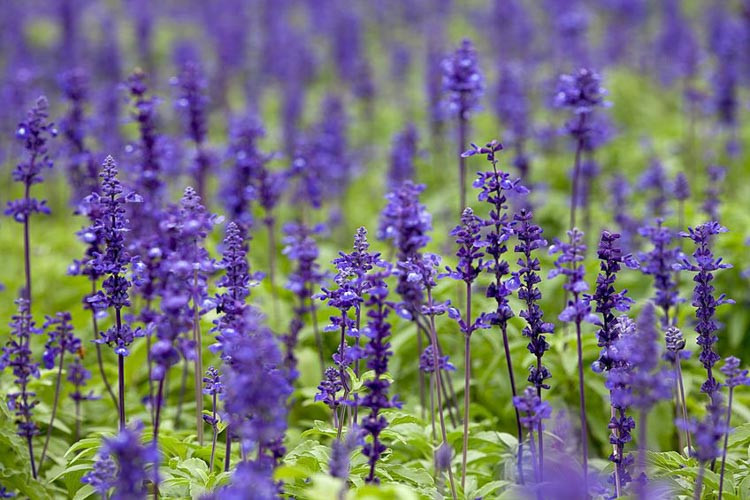Salvia
Salvia, also known as Sage, is a genus of flowering plants in the mint family, known for their colorful blooms and fragrant foliage.
Diversity: Salvia includes over 900 species of plants, many of which are native to the Americas. This diversity means that there is a Salvia plant for almost any garden situation, from full sun to partial shade and from moist to dry soils.
Growth habit: Salvia includes a wide variety of species with different growth habits and can be annuals, perennials, or shrubs.
Colors: Salvia flowers come in a wide range of colors, including blue, purple, pink, red, and white. Some species even have multicolored blooms or flowers that change color as they mature.
Blooming period: Salvia plants typically bloom from late spring through summer and into fall, with some species continuing to produce flowers until the first frost.
Fragrance: Many species have fragrant foliage that adds an extra sensory element to the garden. The scent can range from minty and herbal to sweet and spicy.
Uses: Salvia plants are versatile and can be used in a variety of garden situations, including mixed borders, rock gardens, and container plantings. Some species are also used for medicinal or culinary purposes.
Hardiness: Salvia plants are generally hardy and easy to care for, making them a favorite of gardeners of all levels of experience. They can be grown as perennials in mild climates or as annuals in colder regions.
Wildlife attraction: The flowers are popular with pollinators, such as bees, butterflies, and hummingbirds. This makes them a great choice for gardeners looking to attract wildlife to their yards.
Deer/rabbit: The plants are generally not preferred by deer and rabbits.
Overall, Salvia is a diverse and versatile genus of plants that can add color, fragrance, and wildlife attraction to any garden. With their hardiness and ease of care, they are a great choice for gardeners looking for a low-maintenance yet beautiful addition to their outdoor spaces.

